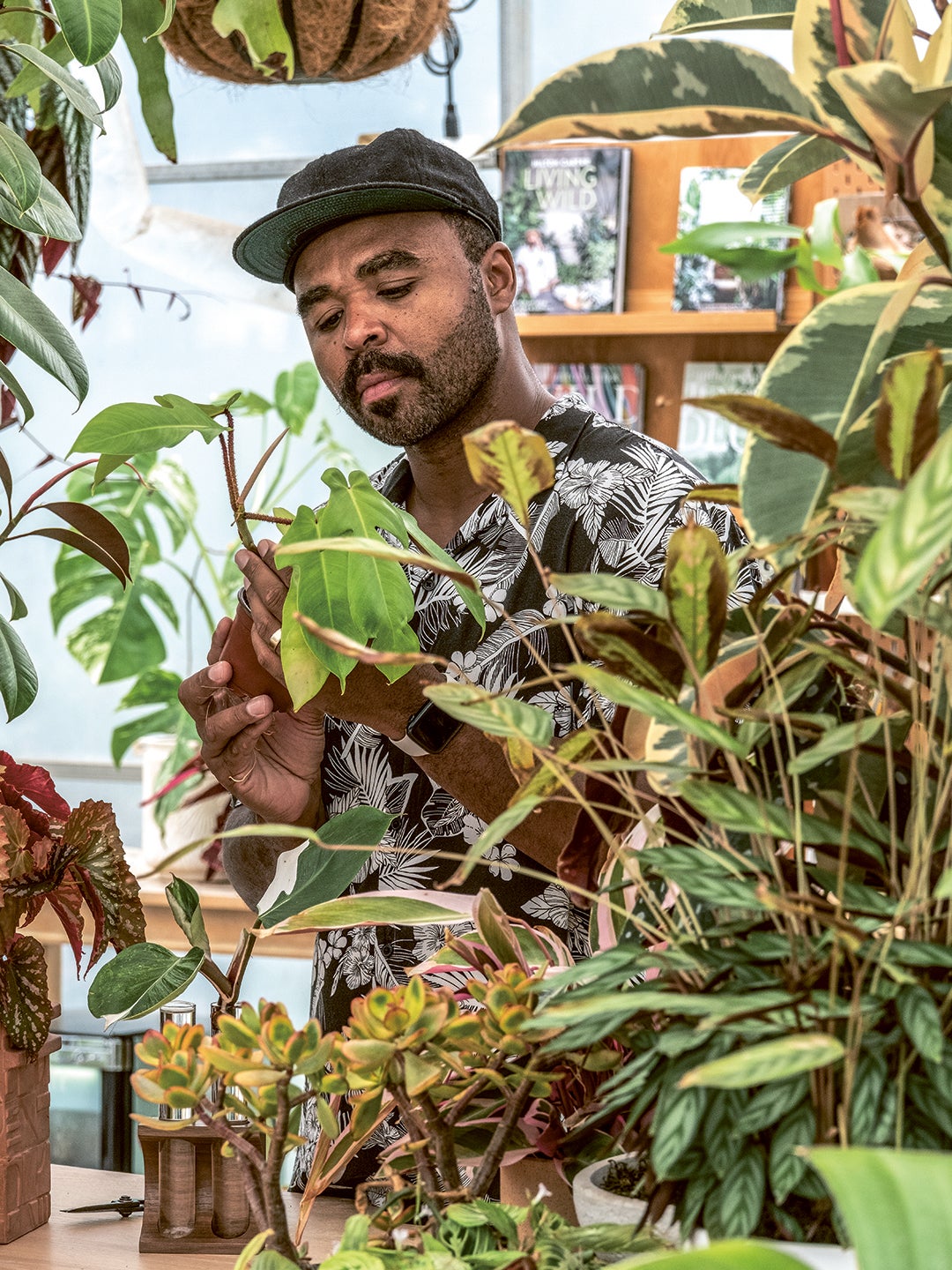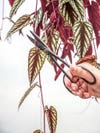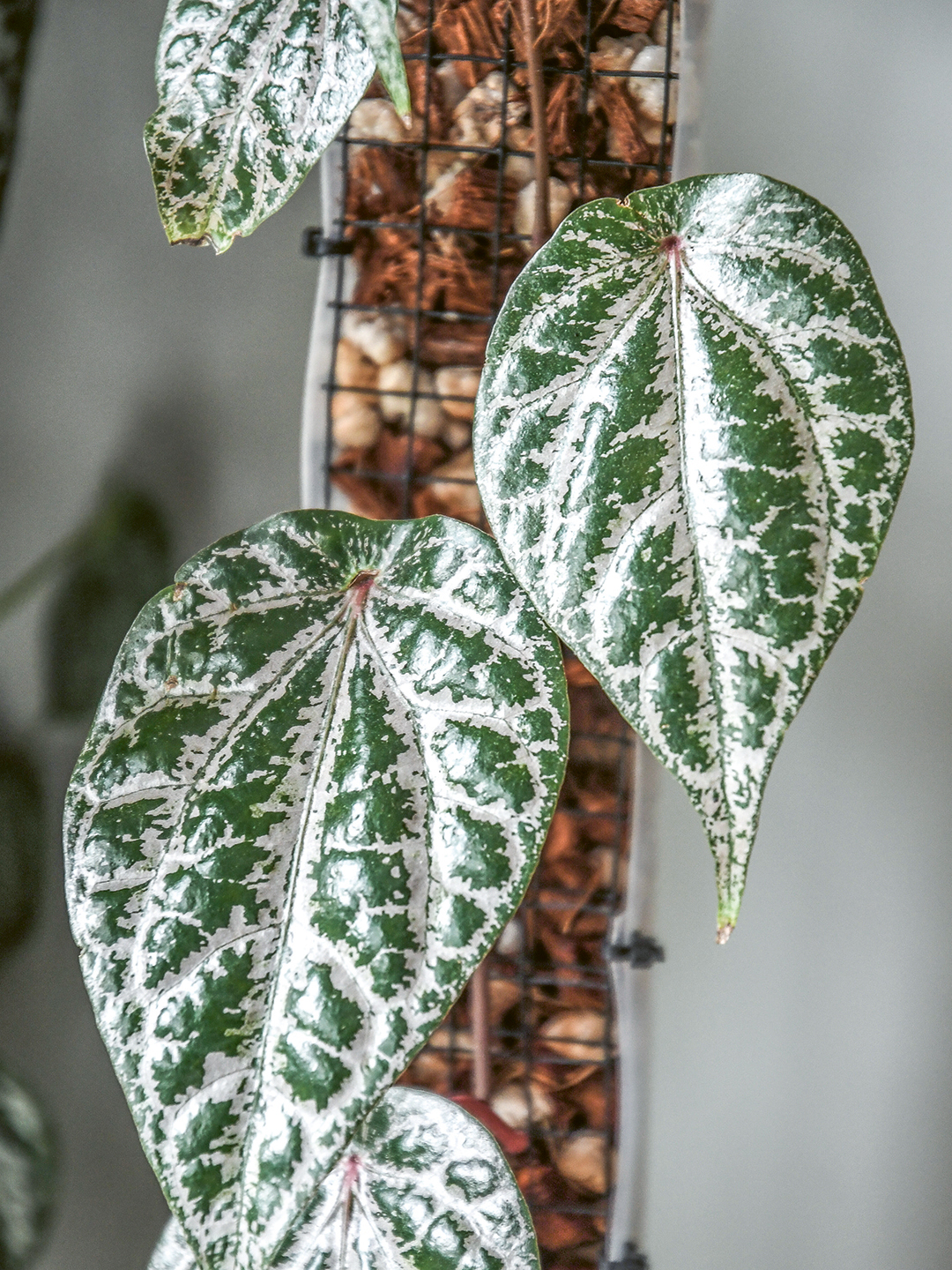Hilton Carter’s 5 Favorite Plants to Propagate From Stem Cuts
His new book is all about the gift that keeps on giving.
Updated Apr 2, 2024 11:34 AM
We may earn revenue from the products available on this page and participate in affiliate programs.
Hilton Carter sees your bottle of wine and raises you a much more personal gift idea: a plant cutting. Propagation is a green thumb’s favorite trick for doubling their amount of greenery for free, but it’s also a way to share your passion with loved ones. And now you don’t need to worry if said recipient has no clue what to do with the little stem you just gave them. Carter’s newest book, The Propagation Handbook: A Guide to Propagating Houseplants, will equip them with all the necessary knowledge and tools they need to turn that snippet into a thriving houseplant.
It comes at the perfect moment. In case you didn’t know, the best time of year to propagate is anytime between spring and summer, when most plants are actively growing. Psst: You can snag Carter’s book, along with a slew of gardening tools and sculptural planters, at your local Target (his latest collection with the brand just launched). You’ll even find live plants in the mix, including the sun-loving Ficus Shivereana. “The more light it receives, the more lime green speckled leaves it’ll grow!” he says.
If there is a propagation method to familiarize yourself with ASAP, it’s the stem cut. Once you’re able to successfully identify a node (the small bump below every leaf growth) and are comfortable cutting around 1 to 2 inches below said sweet spot, congratulations: Most of the hard work is already over. From there, you’ll place your cutting in water until it sprouts roots and then transfer it to soil, which you’ll want to keep nice and moist in the early stages.
So what types of plants can you take stem cuts from? While it applies to almost all vinelike plants, in this excerpt from The Propagation Handbook, Carter reveals his five favorite species to propagate with this method.
Cissus Discolor
While there are plenty of Rex begonias that you could choose to propagate, Cissus discolor is by far one of my favorites. And as is the case with many vining plants, your chances of seeing your Cissus discolor cutting develop roots are extremely high.
LIGHT
Medium light to bright indirect light. No direct sun.
WATER
With lukewarm water, to keep the soil moist but not wet. Never let the soil completely dry out. Mist every few days.
TEMPERATURE
60–80°F/16–26°C during the day and no lower than 60°F/16°C at night.
Philodendron Painted Lady
One of the reasons the Philodendron Painted Lady is among my favorite plants to propagate is simply because of how easy it is. This in turn makes it easier for me to share. The deciding factor is the number of nodes that grow below each leaf growth. While many vining plants will produce a single node below a leaf growth, the Painted Lady may have two, three, or even four.
LIGHT
Bright indirect light to medium light.
WATER
With lukewarm water, when the top half of the soil is completely dry, making sure to water until it comes out of the drainage hole of the planter.
TEMPERATURE
65–75°F/18–24°C during the day and no lower than 60°F/16°C at night.
Sygonium Albo
With the Syngonium albo, there are plenty of nodes to choose from. With variegated plants, the type of leaf you cut will more likely determine the type of new leaf that will eventually grow along that vine. So when taking a cutting from the albo, pick a leaf that feels exciting to you in order to produce a similar look in the future.
LIGHT
Medium light to bright indirect light. No direct sun.
WATER
With lukewarm water, to keep the soil moist but not wet. Never let the soil completely dry out. Mist every few days.
TEMPERATURE
60–80°F/16–26°C during the day and no lower than 60°F/16°C at night.
Piper Crocatum
I love this plant so much that it inspires me to propagate it often so that I can have its vines dripping throughout my home. That feeling won’t escape you as well. Propagating most pipers is easy. Propagating all pipers is fun! The same goes for the crocatum. While I love seeing them develop roots in water, displayed in my cradle vessels, I’ve seen them really show off when placed in sphagnum moss, too.
LIGHT
Medium light to bright indirect light. No direct sun.
WATER
With lukewarm water, to keep the soil moist but not wet. Never let the soil completely dry out. Mist every few days.
TEMPERATURE
60–80°F/16–26°C during the day and no lower than 60°F/16°C at night.
Monstera Deliciosa Thai Constellation
When it comes to propagating a variegated plant like this, many are hoping that they will produce new growth with more white than green. If this is something that’s important to you, take a look at the stem where the node is located; this will give you a good sense of what will unfurl next. If the stem where the node is located has a mix of white and green in it, you’re more than likely to see a highly variegated leaf. If the stem where the node is located has more green, the next leaf to unfurl will lean more to the green side.
LIGHT
Bright indirect light to medium light.
WATER
With lukewarm water, when the top half of the soil is completely dry, making sure to water until it comes out of the drainage hole of the planter.
TEMPERATURE
65–75°F/18–24°C during the day and no lower than 60°F/16°C at night.
Shop Hilton Carter‘s The Propagation Handbook

From The Propagation Handbook: A Guide to Propagating Houseplants by Hilton Carter, CICO Books. Photography by Hilton Carter © CICO Books 2024.







